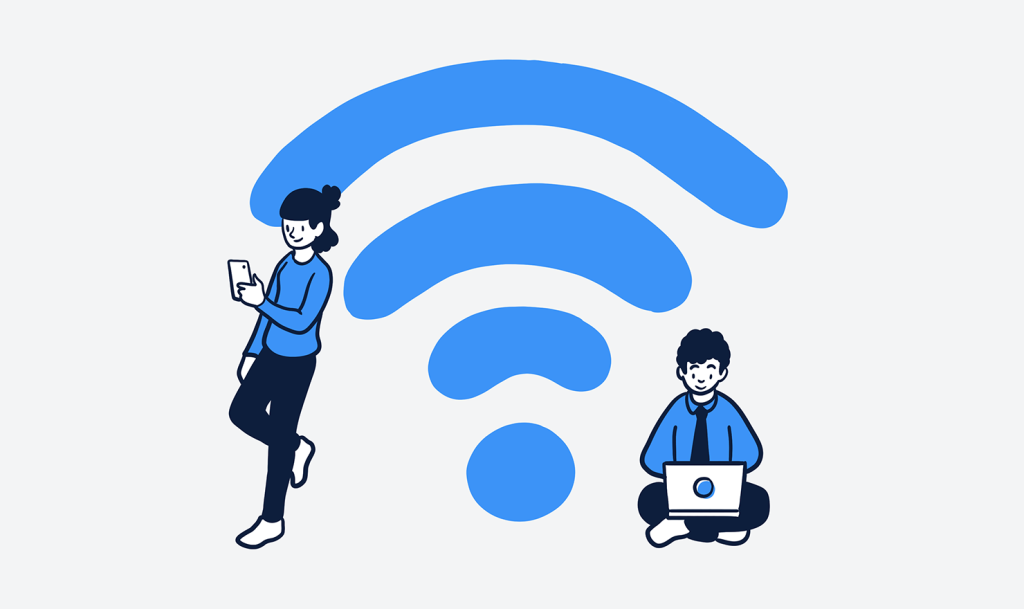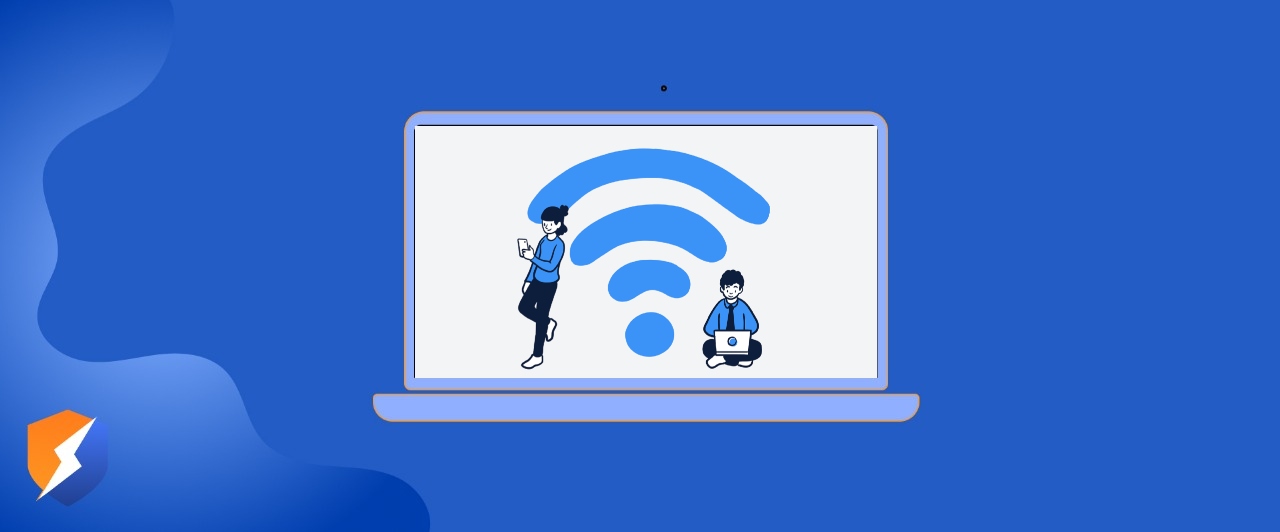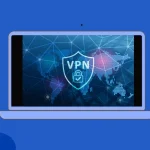- By Hammad Memon
- June 13, 2025
Let’s face it—complimentary public Wi-Fi is very convenient, whether you’re traveling, utilizing a remote work opportunity, or simply trying to save your mobile data. But here comes the problem—often, these Wi-Fi networks are unsecured, which means your personal data is exposed. The challenge is to find a secure public Wi-Fi, which is not easy!
To handle this problem, you can always use a secure and reliable VPN connection. A VPN can help protect you, regardless of the public Wi-Fi you have connected to, but you still need to find a relatively secure public Wi-Fi connection.
Here are four helpful ways to find free Wi-Fi anywhere you go — and how to stay safe while you’re connected.
Method 01- Look for free Wi-Fi hotspots at public locations
Cafes, airports, hotels, parks, restaurants, bars, museums, bus or train stations, and in some cases, theaters or cinemas may offer free internet access to their guests, customers, or anyone passing by. Scan the environment and try to locate the closest free Wi-Fi hotspot.
Note: Don’t forget that free Wi-Fi is a playground for hackers. The best way to avoid issues is to use a secure VPN like SaviourVPN.
Method 2: Turn your mobile phone into a Wi-Fi hotspot
This method might work exceptionally well if you’re traveling with someone else. For example, let’s say your travel buddy has mobile data on their phone, and you don’t. Instead of asking them to Google everything for you, you can ask them to turn on Personal Hotspot on their phone, and voila, you both have Wi-Fi.
If you’re working on your laptop and don’t want to connect to public Wi-Fi, just turn on your personal hotspot and connect your laptop! Your laptop now has Wi-Fi instantly!
Method 3: Free Wi-Fi apps
Having free Wi-Fi apps on your device can help you locate free Wi-Fi. Are there apps that offer free Wi-Fi? No, but this is the next best thing: finding a compilation of free Wi-Fi hotspots.
But how does this function? All such apps below have the same function, which is to find passwords of open networks or insecure open networks. Usually, the compiled content is user-generated. This means that users have both added and shared the credentials of available networks.
However, be careful; something free usually has not-so-obvious costs attached, like risk of cyberthreats or exposing your personal information to hackers online.
Method 4: Cheap Wi-Fi with Portable Routers
Suppose you are comfortable spending a little extra to get reliable access. In that case, portable routers and global Wi-Fi services may provide a better solution to “free” Wi-Fi; these costs are not entirely “free,” but are less expensive, particularly if you travel a lot.
For example, Fon allows users to purchase a portable router and share a small amount of their bandwidth with other people. Most of their connections will still be allocated to them; many of them can be used by your Facebook friends or nearby Fon users. You will have created an “experience” of sharing the network.
How can I get free Wi-Fi at home without paying?
One alternative is to tap into your neighbor’s Wi-Fi illegally. While we are not legal experts, in most countries, piggybacking is illegal, and to be honest, it just feels inappropriate unless you have at least asked permission first.
You may have the option to connect your phone as a hotspot to other devices, which can be easily done if you have a suitable data plan. Another option, via your phone, could be to connect it to your PC with a USB cable and establish a tethered connection.
Risks of Using Free Wi-Fi
Free public Wi-Fi is always easy and convenient: when you are traveling, especially if you cannot use mobile data. Having access to an open McDonald’s Wi-Fi always helps when you need directions (online maps), buy a ticket for public transit, or at least call a taxi.
However, be cautious when accessing unsecured public Wi-Fi. This is one of the easiest ways for spies to detect your online activities and potentially get your personal and financial data.
The tools used to detect your online activities do not have to be heavy or sophisticated. Any traffic that goes through open Wi-Fi is usually unsecured and does not have the type of encryption to protect your internet data if you choose to send sensitive information, such as credit card numbers, passwords, or texts, across unsecured Wi-Fi, which provides a clear line for bad actors.
5 Tips on How to Stay Secure on Public Wi-Fi

Who doesn’t enjoy the FREE Wi-Fi, but there’s a downside that comes with it. Hackers have grown fond of unsecured networks to compromise your personal information, and we would highly recommend you take measures to protect yourself!
Here are five helpful tips to protect yourself while using public Wi-Fi:
- Use a VPN connection
A Virtual Private Network encrypts your Internet connection and makes it damn near impossible for a hacker to intercept your data! Being connected to a VPN is one of the safest ways to browse when you’re connected to a public network. Use secure VPN services like SaviourVPN.
- Don’t access your personal data on public Wi-Fi
Don’t log into your bank account or enter credit card information on public Wi-Fi. Just don’t! Save that for a secure, private connection.
- Turn off sharing
Turn off file sharing, AirDrop, and printer access on a public network. This will help your files from being accessed or taken without your permission.
- Use two-factor authentication
Adding an extra step to your logins helps keep your data safe. If a hacker gets your login credentials, two-factor authentication may keep them from accessing your account.
- Keep software updated
Make sure your operating system, antivirus software, and all apps are up to date. Many updates contain security patches for the most recent threats.
All of these precautions are simple and effective to use. Enjoy the convenience of public Wi-Fi without jeopardizing your data!
FAQs
Public Wi-Fi is problematic and often risky. This is because it is typically an unsecured wireless environment where hackers can intercept the data you transmit over the wireless network. The recommendation here is to use a VPN while using public Wi-Fi at all times at all times when using public Wi-Fi.
A VPN (Virtual Private Network) is a secure and encrypted connection created over an unprotected public wireless network. While using public Wi-Fi, users are safeguarded from prying eyes accessing their data while transmitting it over public wireless networks.
Almost any cafe, airport, library, and hotel typically provides free Wi-Fi. Alternatively, you can find free Wi-Fi at many hospitality locations, leveraging apps and websites like Wi-Fi Map to locate the nearest hotspots.
Public Wi-Fi cannot steal passwords or information from you. However, if a hacker can access a public Wi-Fi network because it is compromised, and the public Wi-Fi network does not utilize encryption, such as HTTPS or a VPN, they can access your user ID and login information.
When you are not using a public Wi-Fi device, it is better to turn Wi-Fi off effectively and securely, thereby avoiding unknowingly connecting to a public Wi-Fi network that may have compromised security measures, and also saving battery life on mobile phones.
Hammad Memon
Hammad is a passionate cybersecurity enthusiast and tech writer dedicated to making online privacy accessible to everyone. With a background in coding and digital security, he breaks down complex VPN and cybersecurity topics into easy-to-understand guides for Saviour VPN’s audience.












